13 Surprisingly Confusing Parts of Shower Remodeling (and How to Make Sense of Them)

I get it – you DO NOT remodel your shower every day (or hopefully every 10 years either).
Then you start researching materials – or looking for a contractor to install the job. You find product options and installation approaches vary more than political opinions on X (the social network formerly known as Twitter). Confusion sets in.
The question becomes how can you make sound shower remodeling decisions? And how can you NOT feel you’ve been ‘taken to the dry cleaners’ (so to speak) by the end of the project and wonder what could have been?
One way is to read the 13 surprisingly confusing parts of shower remodeling. You’ll get straight answers from a guy who is soooo old (and been in the bathroom remodeling business soooo long) he has to pretend to be dyslexic, so you don’t wonder if he’s still ‘with it.’ And yes, I do ‘claim’ to be a ‘dyslexic 56 years old,’ and not my actual age (which is 65)! Shaving 9 years off my age, any way I can, works for me.
Now let’s look at the 13 surprisingly confusing parts of a shower remodel. My goal is to make you more confident about your project (whether it’s for materials or choosing a contractor). I’ll organize these confusing elements about shower remodeling into frequently asked questions in 5 categories which. These categories are:
- General questions about shower remodeling.
- Questions about shower pans and shower floors.
- Questions about shower wall surrounds.
- Questions about glass shower doors.
- Questions about accessories for a shower system.
General questions about shower remodeling
Confusing shower remodeling question #1– How is it possible a (seemingly simple) tub to shower conversion (or shower to shower conversion) can cost from $7,000 to $25,000?
There’s a lot of homeowners who need to be scraped off their floor (or have near heart attacks) after getting an estimate on a shower remodeling project. They get crazy high prices. Even a straightforward tub to shower remodeling project can cost up to $25,000. Owners wonder if the high-priced companies are ripping them off, or if the cheap companies will do a shoddy job. How can prices vary this greatly, they ask?
And while I’d like to tell you the cost difference is because the expensive quotes use better quality materials -this NOT always the case!
You see the biggest cost (and price) difference between the most expensive companies and the cheapest ones is usually sales and marketing costs. The ‘big boys’ and ‘big girls’ who have the largest operations and are all about growth spend between 10 to 20% of the price of a sale on marketing (to get leads). Then they’ll pay a sales rep another 10%.
The small companies (often operating with low overheads and minimal marketing spending) can do the job for much less. However, you have to worry will they be around to honor their warranty, or if they’ll be ‘too legit to NOT quit,’ if your project becomes challenging as M.C. Hammer might have said.
If you want to learn more about shower pricing to figure who(m) to choose, read How to Get a Quote on a Shower Remodeling Project and make sure you DO NOT get ripped off!
Confusing shower remodeling question #2– Will the shower be waterproof or water resistant?
Shower leaks are serious problems. If you get a leak it’s not uncommon to need to rip everything out. And quite frankly, there’s a big difference between products (and shower systems) which are waterproof vs. water resistant.
Basically, when you’re choosing grout free products (grout free shower pans and wall panels) the products are waterproof and made of materials which don’t absorb moisture.
And when you’re choosing a tile shower your ‘waterproofing’ is behind the wall (or underneath the grouted tile joints in a shower pan). And while cementitious tile backer boards are ‘water resistant, I’d use waterproof tile backer boards (or bases). Look for systems like those made from Wedi or Schluter (or comparable). A waterproof system behind the tiles is smart shower remodeling ‘insurance.’
And keep in mind – even with ‘waterproof’ tile backer systems – the joint on the surface is still only moisture resistant, not waterproof. And if you hate, hate, hate cleaning grout joints, the best way to eliminate this ‘tasty task’ is go with realistic looking grout free wall panels like you’ll see below.
Confusing shower remodeling question #3– Do I need an ADA shower if I have a family member whose mobility isn’t the greatest?
Many homeowners will ask for an ‘ADA shower’ if they have a family member with mobility challenges. However, they don’t usually know what ADA means. ADA stands for the American’s with Disabilities Act, which only applies to public facilities. But in most cases when people ask for an ‘ADA shower’ in their home, what they really want is a safe shower.
To learn more about safe shower options read Do You Need an ADA, Accessible, or Age in Place Shower?
Confusing shower remodeling question #4– Should I get rid of the tub and install a shower?
This ‘age-old’ question has blown the mind of owners, realtors, and families for years.
While far more people take showers than tubs, showers are safer, can be used to age in place, and you’ll get cleaner taking a shower – you may end up excluding prospects from buying your home who have small children if they’d like to bathe them in the bathtub. And while I could tell you there’s only one right choice between a tub and a shower, there isn’t.
If you’d like to ponder this debate further read 4 Reasons You Shouldn’t Listen to your Realtor (why a shower is better than a tub, even for resale.
Confusing shower remodeling question #5– What are the steps for renovating a shower?
If you’re not Chip or Joanna Gaines (and no, I’m not delusional enough to think they’re reading my blog) AND you haven’t played a bathroom remodeler or home ‘flipper’ on TV (and no, these ‘flippers’ I’m referring to aren’t affiliated with the 1964 TV series about the female dolphin – although you can check out a scene about the other ‘flipper’ in the clip below) you may be confused about the steps in a shower remodel.
To simplify it, here’s the (general) order to help you prioritize materials and labor needed whether you’re doing a DIY shower remodel or buying products for your contractor.
- Step 1 – Demo (duh, you’re likely saying)
- Step 2 – Install your shower pan (or wet room floor system) following rough framing and rough plumbing.
- Step 3 – Install your tile surround or grout free wall system (and backer boards behind them).
- Step 4 – Install the shower accessories (sometimes in conjunction with the wall surrounds if you’ve doing a recessed niche) and plumbing fixtures.
- Step 5 – Install your glass shower door, fixed glass wall, or curtains.
Questions about shower pans and shower floors
Confusing shower remodeling question #6– Should I choose a shower pan with a threshold, a ramped shower base, or one level floor system?
Most showers in the United States have a ‘shower pan’ (also called a shower base) which has a curb (or threshold) you step over to enter and exit.
The advantage of a ‘curbed shower pan’ is it helps keep water inside the shower – and not spill onto the bathroom floor.
The disadvantage of a ‘curbed shower pan’ is it requires someone to step over the pan. And if you have a family member who uses a wheelchair or walker this may not be possible to do.
Given these pros and cons what should you use?
If you need a roll in shower (also called a barrier free shower) it’s smart to build a one level wet room if you have the money. With a one level bathroom not only is the shower waterproofed, but so is the bathroom, and it looks sleek.
If funds are tighter – and you still need a roll in shower – its more cost-effective to use a ramped shower pan, a low profile shower pan with a separate ramp kit.
And if you don’t need a roll in shower but want to ‘age in place,’ a low profile shower pan (with a curb from 1” to 3” high) works well.
And lastly if you have a small stand up shower (let’s say it’s 32” x 32” or 36” x 36”) a shower base with a tall curb (from 3” to 5”) is generally used to allow a larger volume of water to collect if the drain clogs.
Questions about shower wall surrounds
Confusing shower remodeling question #7– Should I choose tile or grout free shower wall panels?
I’ll be real with you and say this is a loaded question, for me at least.
The reason I say this is the #1 product line my company installs and wholesales ARE grout free shower wall panels. And as you’ll learn in the link below, when I did my own bathroom my wife and I had a number of reasons to choose grout free panels.
15 Lessons You Can Learn from My Safer, Simpler, and More Stylish Master Bathroom
However, with that being said grout free panels are NOT all created equal. Some are cheap, flimsy and simply molded plastic (and that’s NOT what I’d put in my own home). Or stated another way, and more importantly, my wife wouldn’t have it!
The reason to choose wall panels is when you want lower maintenance, a quicker installation, a higher confidence you won’t have leaks, and (generally) a more cost effective solution than tile.
Use tile when you want a one-of-a-kind design, (virtually) unlimited patterns, or you’re personally NOT the one responsible to clean the shower. And as we know, cleaning grout is not anyone’s idea of a good time.
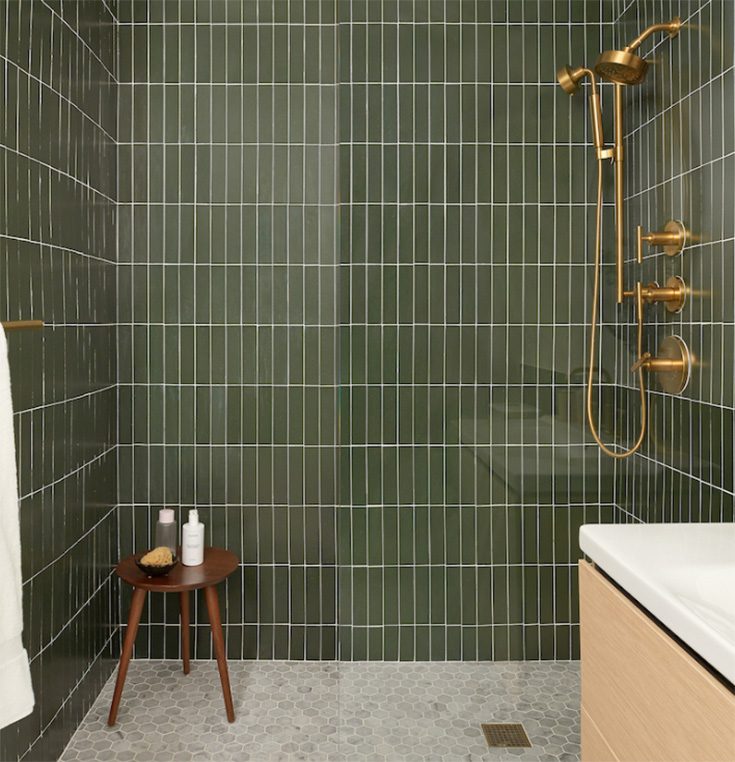
Confusing shower remodeling question #8– I hate tile grouted showers, but I also hate cheap shower surround panels, what can I do?
If you HATE, HATE, HATE grouted tile showers I’m with you. I hated when my grouted tile shower failed. My wife hated moldy grout joints. We vowed to never to go back ‘there’ again!
And, in addition, nobody loves the white, molded, plastic walls you see in home centers stores and hospitals.
So – how can you eliminate these unwanted alternatives?
The solution is to choose cooler – and better quality shower surround panels.
If you want a realistic tile or stone-look shower wall panels, check out laminate wall panels.
If you love ultra-modern, sleek spaces, and have a ‘healthier budget’ (‘err those are code works for this is expensive), these optical grade high gloss acrylic wall panels are killer.
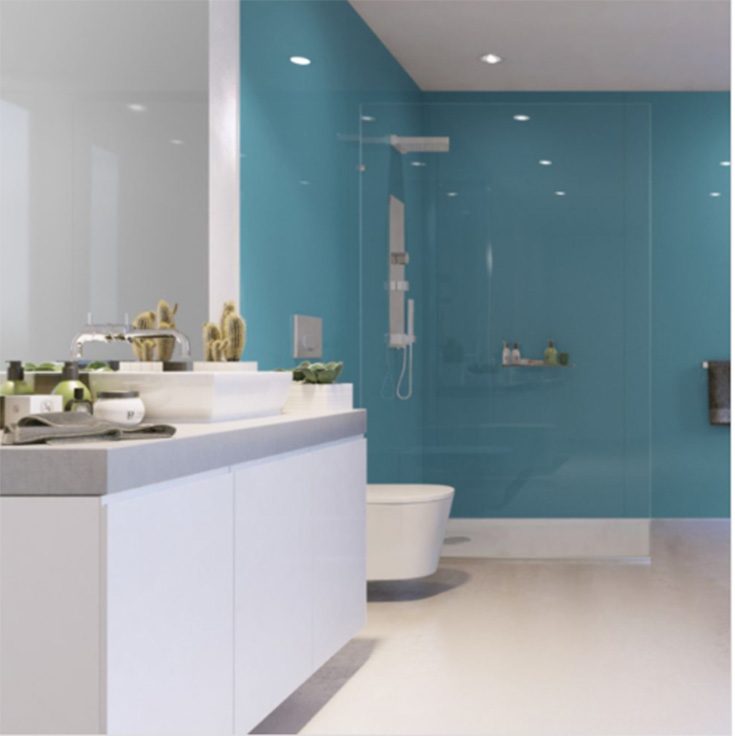
Or if you like ‘solid as a rock’ (which reminds me of a song) wall panels, solid surface shower panels are built like a tank.
Questions about glass shower doors or glass walls
Confusing shower remodeling question #9– How can I choose a shower door which is NOT a pain to maintain?
Shower doors – due to bad designs and flimsy doors installed by production builders– are often shower features people love to hate.
Who likes to clean ‘gunk’ (and yes, that’s the ‘technical term’) from the bottom U channel of a flimsy sliding glass shower door?
And who likes to remove soap scum off the glass? ‘Er, once again, that’d be nobody.
So, what can you do to enjoy the benefits of a shower door (keeping the water in, and the shower warmer) yet don’t enjoy ‘laboring over’ your door to keep it looking good? Here’s a few tricks/features to get a lower maintenance shower door:
- Look for sliding glass doors which DO NOT have a track at the bottom. They’ll generally use thicker glass and have a frameless design.
- Buy a shower door which has ‘glass surface protection.’ This is an application on the glass which repels soap scum (similar to RainX for your car).
- Choose a pivot door which has no tracks.
- Consider a ‘walk in glass wall system’ – like a glass block walk in shower where the blocks don’t show spotting, and has a doorless design.
Confusing shower remodeling question #10– How do I know what type of shower door operating system to select?
There’s a number of types of shower doors – from bypass doors, sliding glass shower doors, pivot doors, and walk in glass doors or screens.
What’s best will mean different things to different people. For example, some want the cheapest door (which often is a fixed glass wall). Others want one which is simplest to maintain (pivot or walk in glass can work). Others want the safest door. And to others it’d be a door which didn’t cause them to bang their head every time they get in because they’re tall (which uses taller glass).
To explore which shower door is right for you read How to Choose the Right Shower Glass Door or Wall.
Questions about accessories for a shower system.
Confusing shower remodeling question #11– So, you’re ‘just asking for a friend’ if ‘they’ really need a grab bar. And if ‘they’ do, where can ‘they’ get one which doesn’t look ugly?
Grab bars are the accessory everyone love to HATE (and no one wants to admit they need)! And who wants their personal bathroom to look uglier with the styles of grab bars you see in a truck stop or hospital?
However, what most people don’t realize is grab bars can ‘hide in plain sight!’ They can look like fancy towel bars if you make the right selection. And even more importantly is they can save lives and save the quality of life people have.
If you want to age in place, or you need an accessible shower, install a grab bar (vertically) as you enter and another inside the shower. Grab bars don’t have to be a hated feature if you research your options.
To learn more about them (and no, you don’t have to tell your ‘friend’ you’re researching for ‘them),’ read Frequently Asked Questions about Grab Bars in a Bathroom – a Product Everyone Loves to HATE!
Confusing shower remodeling question #12– My storage is sorely lacking. How can I effectively use niches and shelves?
Most showers (and alcove tub/showers) lack space for soap, shampoo, and beauty products (and as a guy with A LOT of beauty products, I can say this. Ok, I was just making that up, but my wife does have a lot of beauty products– and that’s why she’s pretty, and I’m NOT!
And if you’re looking to remodel, shower storage is an important area to address. However, you may still be struggling with these questions:
- What type of niche or shower shelving should I use?
- Where should niches or shelves be located?
- What material should they be made of?
- What shower niche sizes can I get?
- What are the advantages and disadvantages of niches? Should they be installed horizontally vs. vertically?
The list of shower niche questions can go on and on. To get to the bottom (or insides to make a bad pun) of these niche questions read 13 Shower Niche Mistakes Homeowners Regret – and how to avoid them.
Confusing shower remodeling question #13– Do I have room for seating in my shower? If so – what are the pros and cons of the available options?
If you’d love it to be simpler – and safer – to shave your legs, relax in the shower, or not worry a loved one will end up on their ‘keester’ with a serious injury, the idea of seating in the shower should intrigue you.
But you may be wondering do I have the room for a seat, and if so what type of seat you should use? If these are questions gnawing at you, read The Pros and Cons of Built In, Fold Down, and Moveable Shower Seats or Chairs.
So, are you more comfortable making decisions about your shower remodel? Do you need help working through this project and choosing the right products?
I hope you’ve become less confused about an upcoming shower remodeling project. I know there’s a lot of ‘moving parts’ (and non-moving parts) in the job.
And if you need project design, product advise, wholesale pricing, or a referral to a local contractor click for a Free Design Consultation and/or talk to a Bathroom Design Specialist at Innovate Building Solutions at 877-668-5888 (and yes this is my team, but don’t fear, most of them are more ‘normal’ than I am).
And if you’re an installing contractor and would like to learn about becoming a dealer of unique wall panels, grout free modern low profile shower pans, and shower replacement kits call me at 888-467-7488.
Thanks for reading and putting up with my wackiness along the way!
Mike

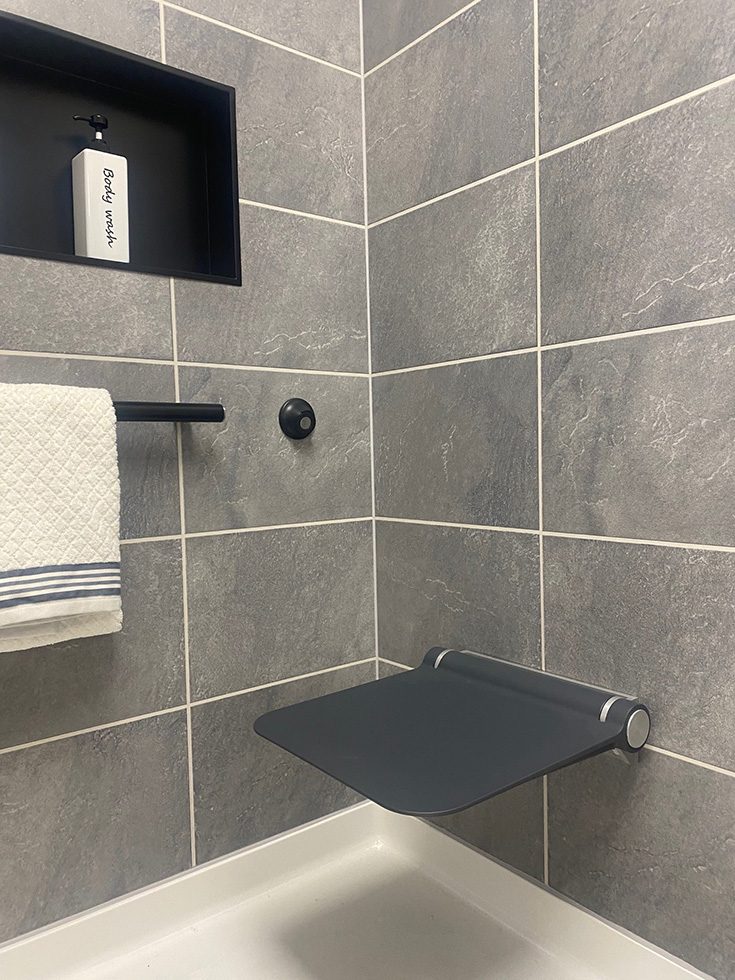

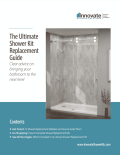

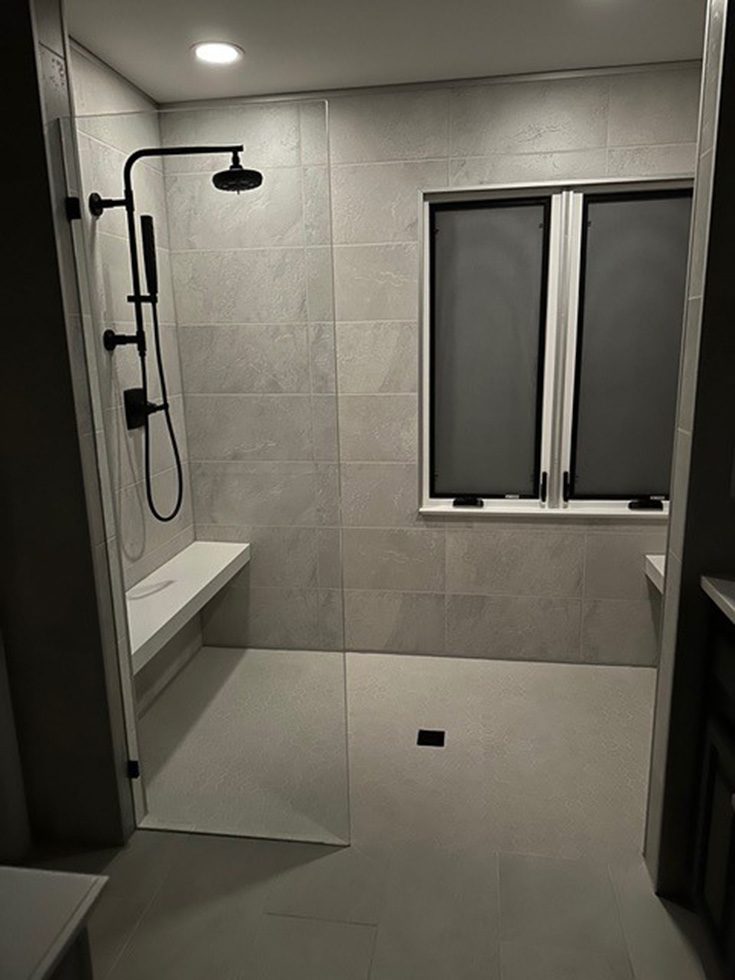

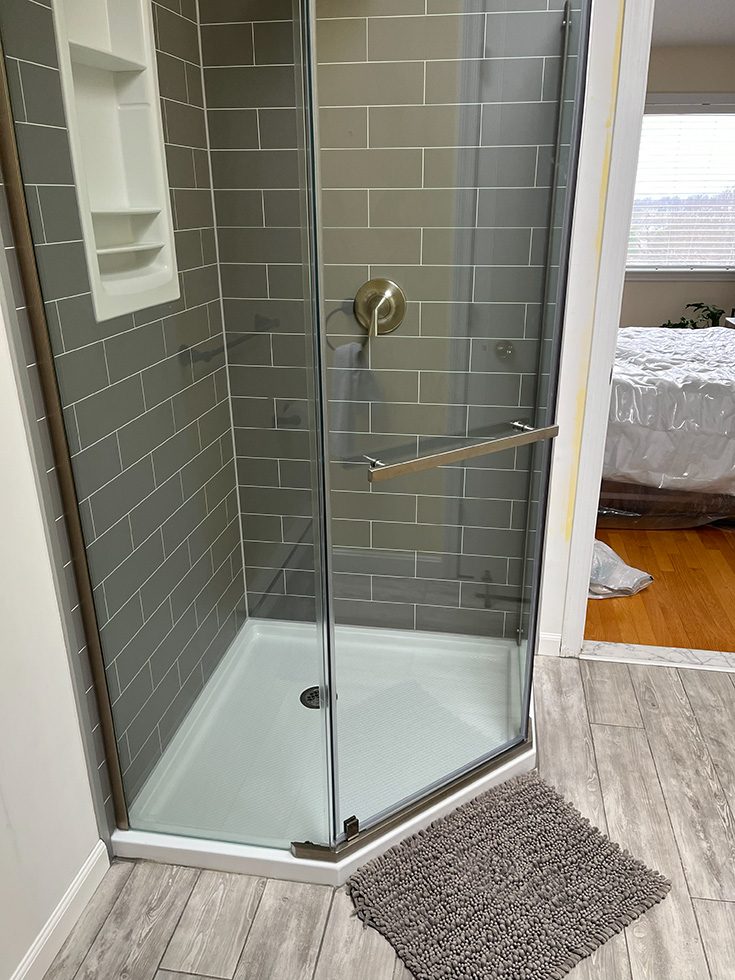
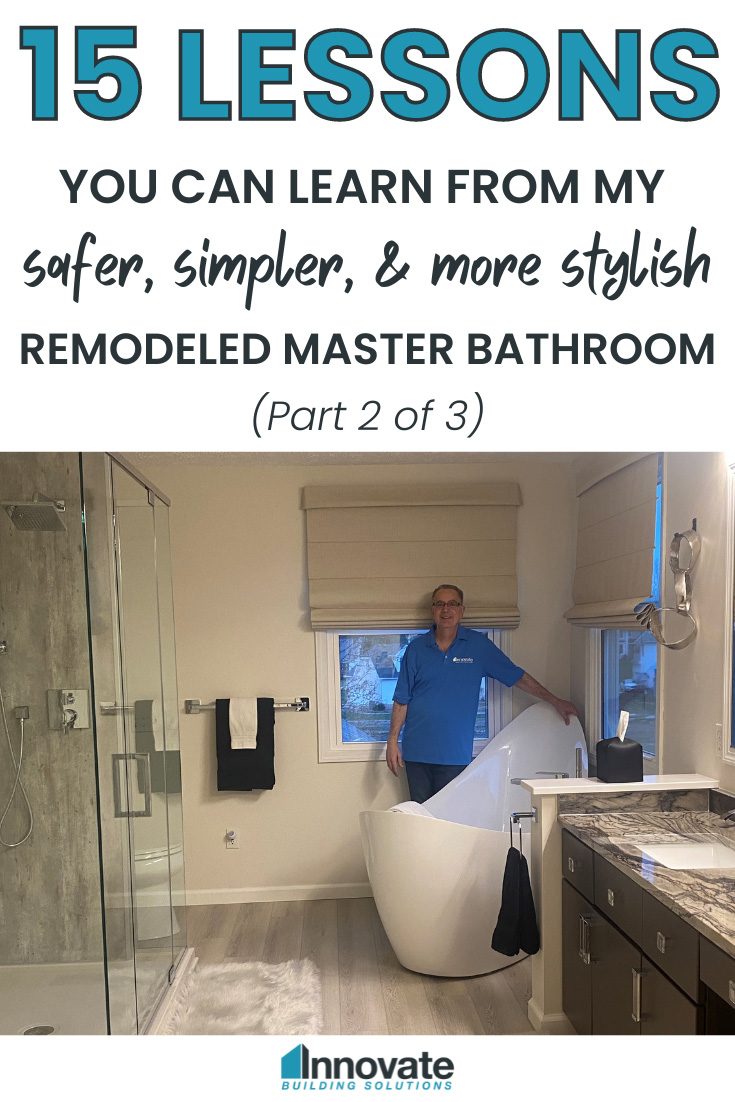
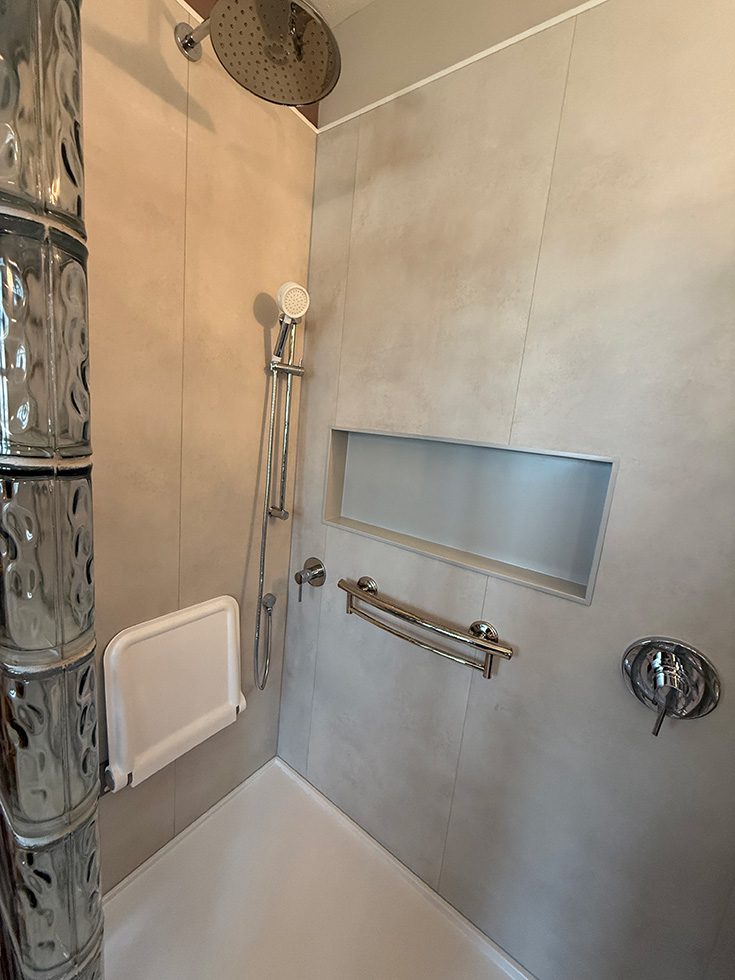
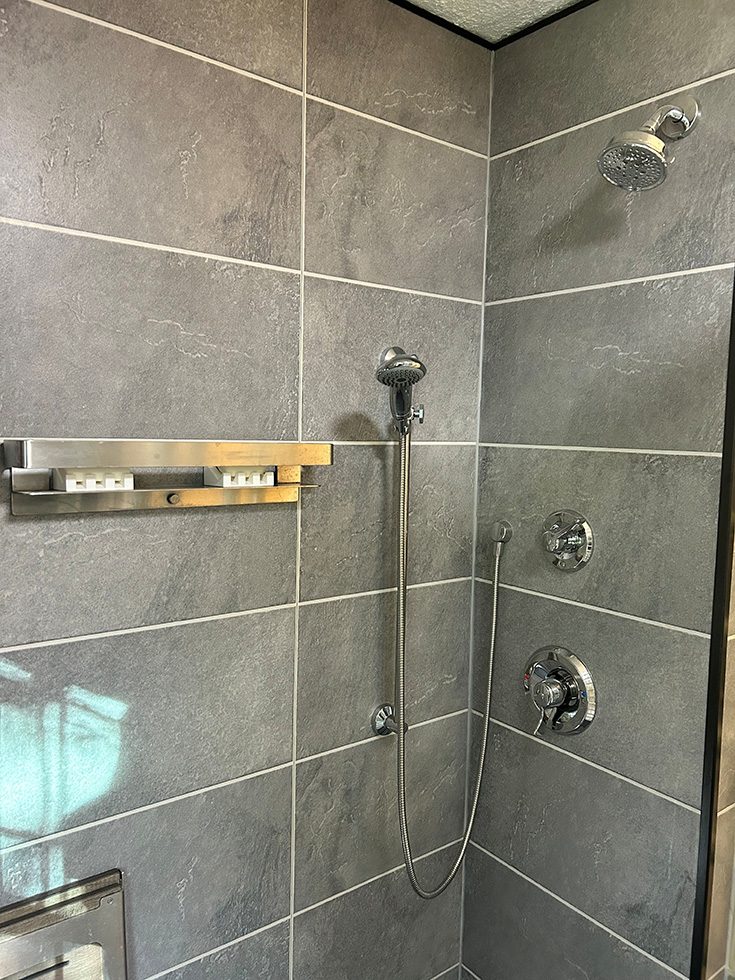
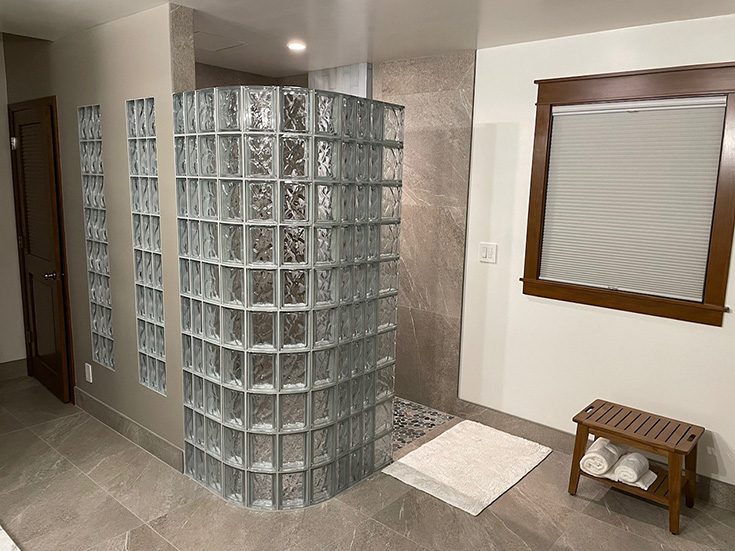

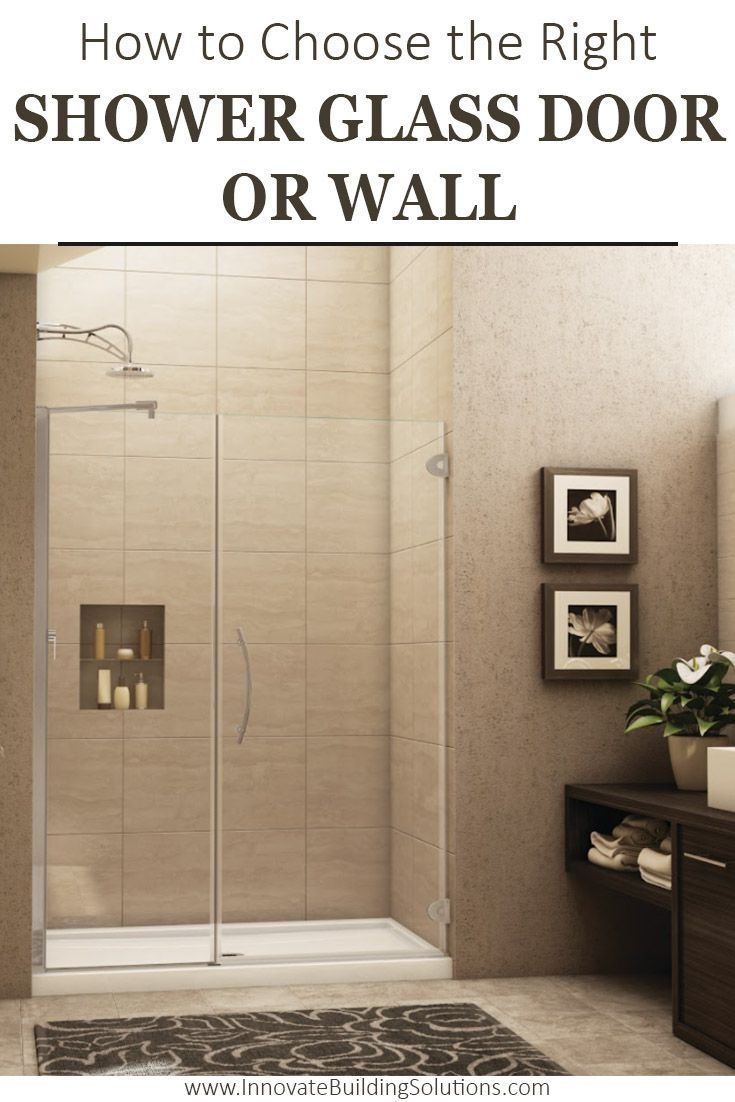
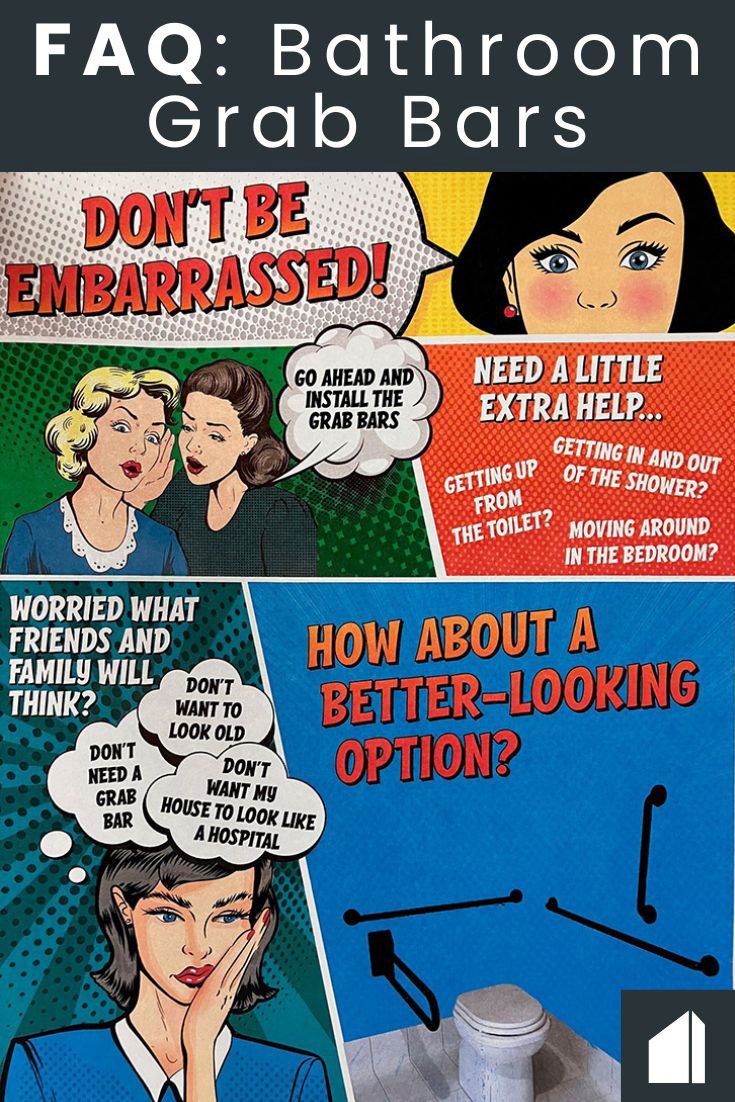
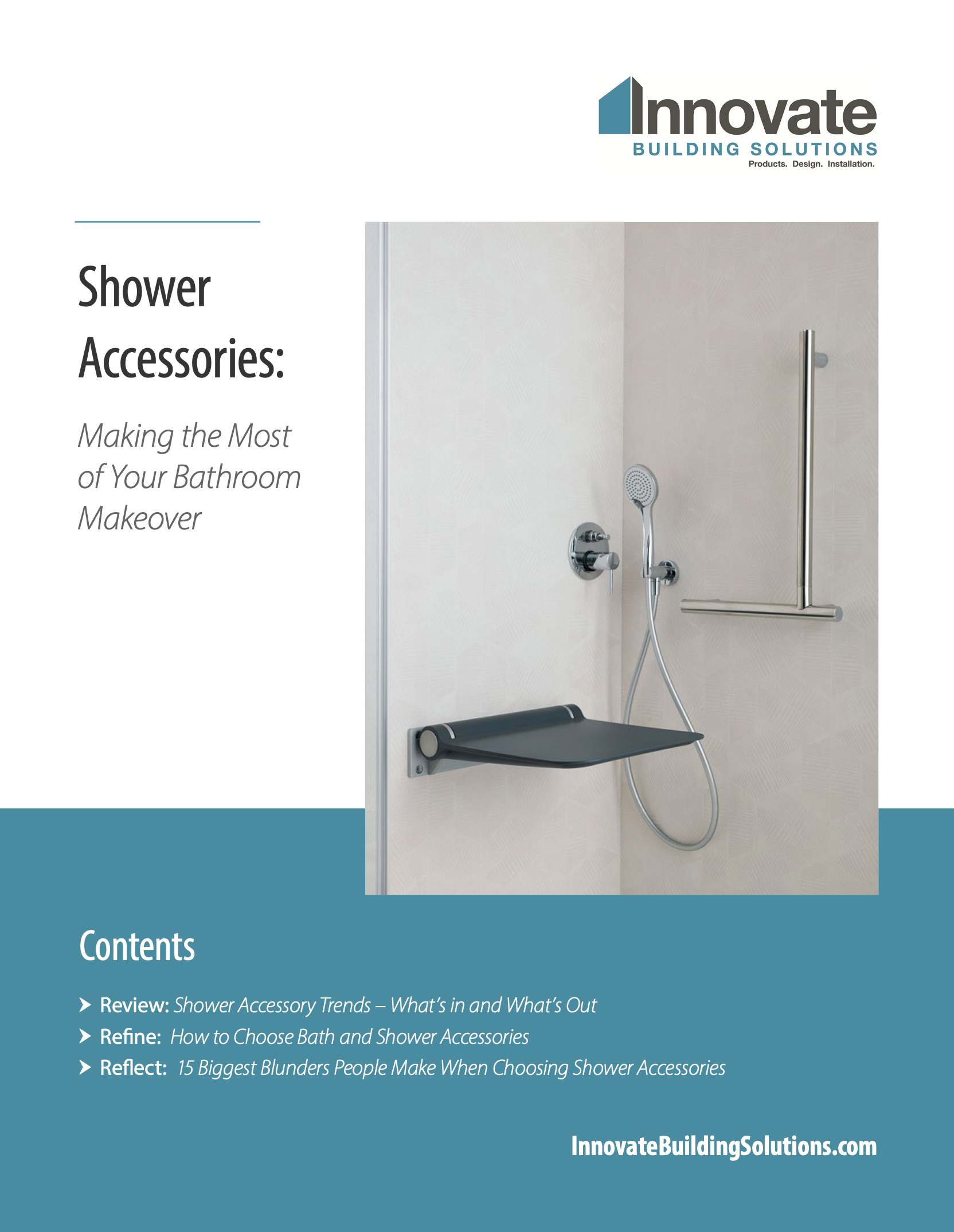

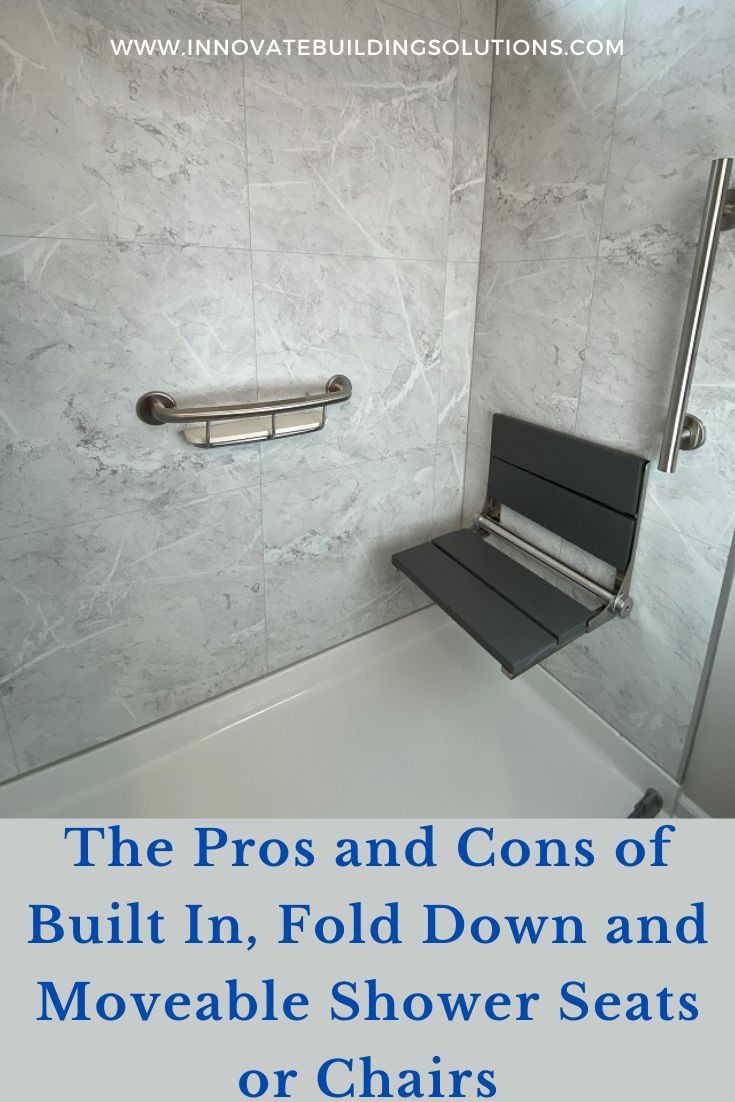




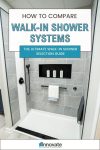




Mike Foti
William – thanks for the insights with this. If you’d like to contact us and/or send a picture of what you may like we can help to identify the pattern(s) and/or get samples to you. We try to use a lot of pictures in our articles – but I know it can be tough knowing what you’re looking at if you don’t work with the product every day – like we do.
Let us know if we can help you. You can reach our team at 877-668-5888 or fill out an on line form – Mike
William Sutch
Hi Mike,
I’m a homeowner and am in the process of remodeling a bathroom. I plan on using Fibo wall panels. I’m not at a point where I’m ready to purchase the panels, but in reading all your articles and videos where you show different bathrooms with different wall panels, I’d like to suggest that somewhere in the photo you identify the color/name of the panel. It would really help me in seeing what the panel looks like in an actual installation, as opposed to samples and help me decide which color and style I purchase. If you could that in future articles and videos, it would be a terrific help. Thank, Bill Sutch
.